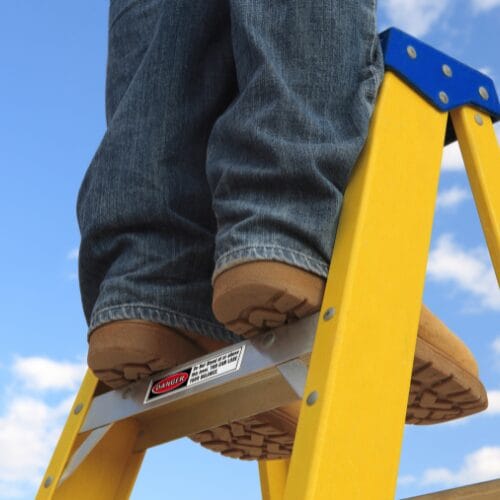Ensuring safety in the workplace is a well-understood endeavour, encompassing the rationale, methods, and specific precautions. Essentially, ‘the how’s,’ ‘the why’s’ and ‘the what’s.’
However, it is equally imperative to extend these standards to one’s home environment…something we may not always consider as carefully as we do in the work environment.
Do you uphold the same level of vigilance regarding safety at home, or do you permit laxity in adherence to safety protocols?
Consider the following inquiries:
- Would you endorse your groundskeepers or maintenance personnel mowing lawns while wearing inappropriate footwear, such as thongs?

- Are you comfortable with your kitchen staff leaving perishable food items exposed on countertops for extended periods before serving them?
- Do you sanction the use of precarious, outdated ladders without fall protection for accessing elevated areas in your home? (I hope you’ve answered with a resounding “no!” to this one)
- Are potentially hazardous substances negligently left within reach of patrons and their children in public areas of your venue? Are these substances more likely to appear within easy reach of a child in your own home?
If any of these scenarios elicit a firm negative response regarding your establishment, why would you tolerate such substandard practices within the sanctuary of your own home?

The significance of fire safety cannot be overstated, particularly during the winter months when the risk of home fires escalates. Regrettably, numerous domestic fire incidents, many of which could have been prevented, serve as poignant reminders of this reality.
Are you confident that all occupants of your residence could effectively evacuate in the event of a fire emergency? Have you installed interconnected photoelectric smoke alarms throughout your home to provide early detection?
The Queensland Fire and Emergency Services offer invaluable resources via their website, facilitating the creation of escape plans, disseminating age-appropriate fire safety education for children, and enabling individuals to assess the adequacy of their home’s safety measures, including the functionality of smoke alarms.
A fundamental question to ask yourself is: “Does every member of my household possess the knowledge and means to swiftly evacuate the premises in the event of a fire?”
Furthermore, if your residence is equipped with deadlocks or window and door grilles, can these be effortlessly opened from within?
On a less cheerful note, it’s worth noting that wheat-filled heat bags have been implicated in igniting household fires. The wheat contents within these heat packs can desiccate over time, leading to spontaneous combustion. As per advice from Fire NSW, it is prudent to refrain from using wheat heat bags to warm bedding or sleeping with them, restricting their usage solely for direct application to alleviate bodily aches and pains.
I urge you to review and complete the Home Fire Safety Checklist to help protect your family against fires as we approach the winter season.
Meet our Workplace Health, Safety and Compliance Advisor, Michelle Bates.
A highly qualified advisor, Michelle brings with her 20+ years of experience in safety and compliance. With experience spanning multiple industries including hospitality, construction, mining, environmental services, large municipalities and amusement centres, Michelle will bring fresh ideas and a breadth of knowledge to the role.
If you have any questions about WH&S and compliance, or would like to implement a Fire Safety plan, please get in touch with Michelle Bates.



